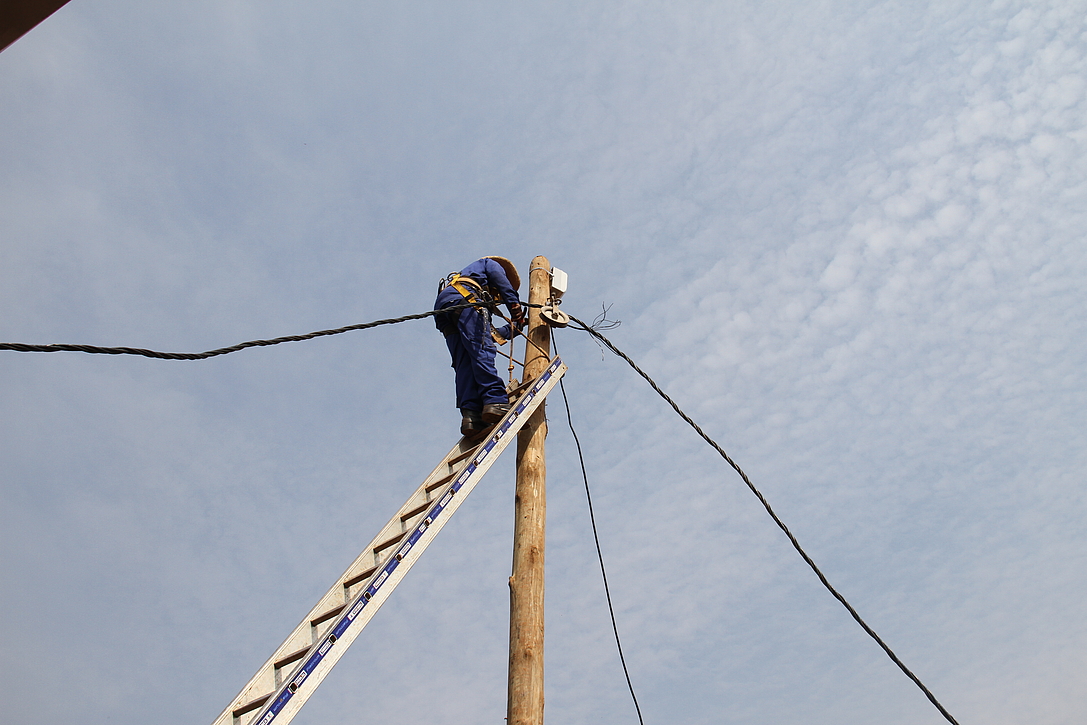News & Events Details

Jan
Electricity access in Rwanda quadrupled in the last 7 years as more households get connected
Imagine living in a world with little or no light when the sun set. That was the plight of an estimated 1380 residents in Ngeruka sector in Bugesera District until they got connected to the national grid early this December
According to one of the residents in Ngeruka sector Mukarugamba Innociata 40 years, they were not always left completely in the dark. Kerosene lamps and the fire wood sticks used to provide some sort of light while cooking.
But these options take a toll on time and health. That’s why the residents are so thankful to the government for having made it possible for them to have electricity in their village.
“I am really happy now that even when darkness falls I will still be able to get along with enough light. Previously with my aging eyes, I used to dread darkness because it meant that the day was over and we would retire for the night unlike today, thanks to the electricity that they brought for us” says Mukarugamba.
Like her neighbors, Mukarugamba feels that there is going to be a lot of developments in their village and more services are springing up because of the electricity access.
“We can now charge our phones and also have services that require electricity brought to our village unlike then when we had to walk miles to get them. I am planning to save and get a small television now that we have power” she concludes. Starting from an extremely low base, the Government has expanded electricity access.
According to statistic from Rwanda Energy Group (REG), the number of households accessing electricity has increased from 10% in 2010 to 41% in October 2017. Among the 41% accessing to electricity, 30% of the households are connected to the national grid while 11% are accessing through off-grid solution, mainly solar energy.
As the Government of Rwanda targets a 100% access to electricity in only 7 years, 82% of households in the City of Kigali (CoK) are currently accessing at a rate , followed by Eastern province with 39% access, the Western Province with 38%, Northern province 34% and the Southern province that has the lowest access of 30%.
Government’s Plan
According to Clémentine Umugwaneza, the Coordinator of the Electricity Access Rollout Program, EARP, the program implementing the Government’s rural electrification targets, there are various ongoing and upcoming projects funded by the Government and development partners.
Statistics show that by October 2017, 39% of households in the Eastern Province already had access to electricity, including 26% connected to the national grid and 13% using off-grid solutions
According to Umugwaneza, rural electrification targets include not only on-grid access but also off-grid solutions as these are fast to install and cheaper.
“We realized that we can speed up access to electricity in rural areas through having more off grid connections. The terrain of Rwanda also slows the on grid connections which require time to connect electricity to people in scattered areas across the country” she explained.
There are other electrification projects in the Western and Northern Provinces funded by the African Development Bank which will provide electricity to more than 30,000 households in Gicumbi, Rulindo, Nyabihu, Ngororero, Rusizi, Karongi and Nyamasheke Districts.
There is another project currently ongoing in the Eastern Province which will soon provide access to 8,104 households.
There is also another ongoing project bankrolled by the Saudi Fund for Development being implemented in Gisagara and Nyanza Districts. This project will provide electricity to approximately 15,500.
Umugwaneza explained also that EARP has signed contracts with Districts to provide access to electricity to more than 40,000 households in a bid increase the number of households connected to the grid.
Categories
Archives
- April 2024
- March 2024
- August 2023
- July 2023
- June 2023
- May 2023
- April 2023
- February 2023
- December 2022
- August 2022
- July 2022
- June 2022
- May 2022
- April 2022
- March 2022
- February 2022
- January 2022
- December 2021
- November 2021
- September 2021
- August 2021
- July 2021
- June 2021
- May 2021
- April 2021
- February 2021
- January 2021
- December 2020
- November 2020
- October 2020
- September 2020
- August 2020
- July 2020
- June 2020
- April 2020
- March 2020
- February 2020
- January 2020
- December 2019
- November 2019
- October 2019
- September 2019
- August 2019
- July 2019
- June 2019
- May 2019
- April 2019
- March 2019
- February 2019
- January 2019
- December 2018
- November 2018
- October 2018
- September 2018
- July 2018
- June 2018
- April 2018
- March 2018
- February 2018
- January 2018
- December 2017
- November 2017
- August 2017
- July 2017
- June 2017
- March 2017
- February 2017
- January 2017
- December 2016
- November 2016
- August 2016
- July 2016
- June 2016
- April 2016
- February 2016
- May 2015
- April 2015
- March 2015
- January 2015
- December 2014
- August 2014
- July 2014
Related News
Our Partners
Please fill in the form or Call us on our Toll free number 2727






















